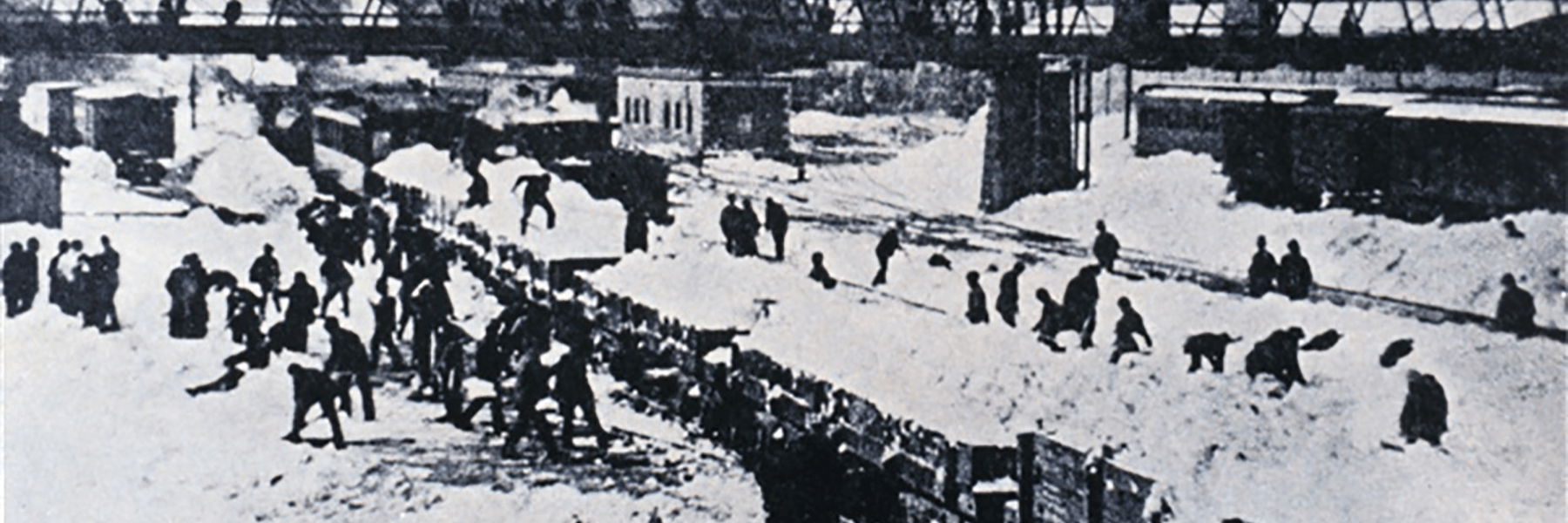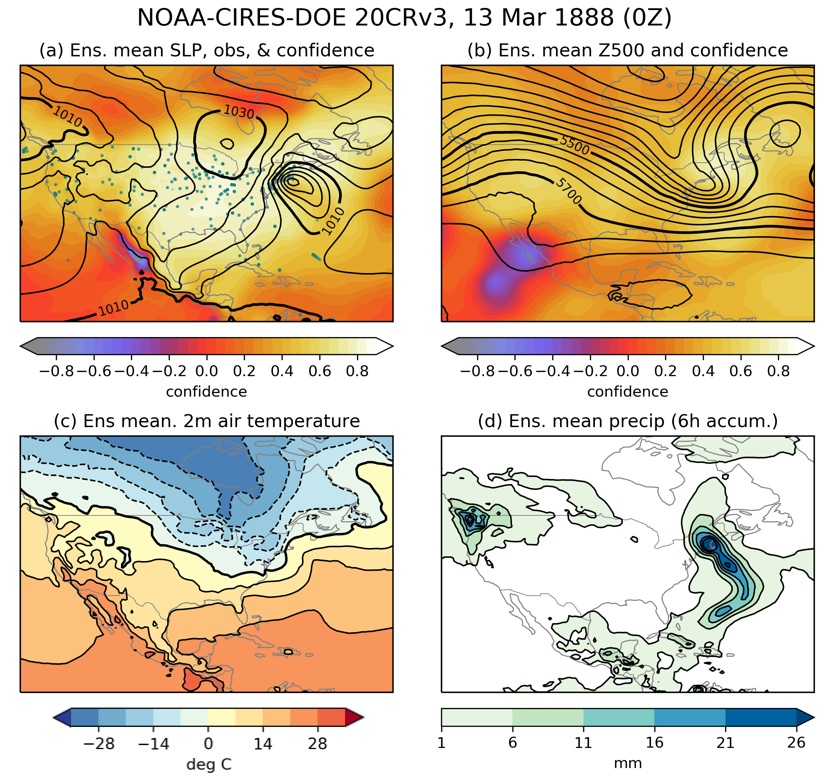20th Century Reanalysis v3 now extends back to 1806 — New study evaluates its performance

Reanalysis combines historical weather observations with forecast maps from weather prediction models to estimate a comprehensive and consistent record of the weather. The Twentieth Century Reanalysis (20CR) Project, an effort that began over a decade ago, aims to produce the longest instrument-based reanalysis. In September 2019, Version 3 of the NOAA-CIRES-DOE 20th Century Reanalysis (20CRv3) spanning 1836 to 2015 was made available to the public, and a paper in the Quarterly Journal of the Royal Meteorological Society discussed the system used to generate the dataset and provided preliminary evaluations.
Recently, 20CRv3 was extended back even further to 1806. In a new paper published in the Journal of Climate, CIRES and NOAA researchers at the Physical Sciences Laboratory led the first evaluation of the full 210-year dataset via comparisons with other reanalyses, independent observations, and satellite products. They find that 20CRv3 is able to accurately estimate individual weather events, interannual variability of precipitation, and recent long-term trends in atmospheric temperature. The level of agreement between 20CRv3 and independent observations and other reanalyses is generally predicted by 20CRv3’s confidence estimates.

Comparisons between 20CRv3 and independent observations, other full-input and sparse-input reanalyses, and satellite products demonstrate that 20CRv3 performs well on scales from weather to climate. 20CRv3 can capture individual weather events such as the Great Blizzard of 1888, and agrees well with independent upper-air observations around the globe, as well as with other reanalyses, throughout the 20th century. The level of agreement with these other datasets is generally predicted by 20CRv3’s own uncertainty fields. Comparisons with satellite products demonstrate that 20CRv3 captures modern trends in atmospheric warming, while putting these trends into a 200-year context. Comparisons with monthly, regional precipitation products show that 20CRv3 also captures interannual variability of precipitation, which is often hard to estimate. Finally, the skill of upper-air fields in 20CRv3 for 1979-2015 is comparable to that of modern operational 3- to 4-day forecasts.
The extension of 20CRv3 back to 1806 means that individual weather events and trends can now be placed into a consistent 210-year context. The level of agreement between 20CRv3 and independent observations and other reanalyses is generally predicted by 20CRv3’s confidence estimates.
PSL co-authors of the Journal of Climate article An evaluation of the performance of the 20th Century Reanalysis version 3 are: Laura Slivinski, Gilbert Compo, Prashant Sardeshmukh, Jeffrey Whitaker, Chesley McColl, Cathy Smith, and Larry Spencer.
Posted: January 7, 2021